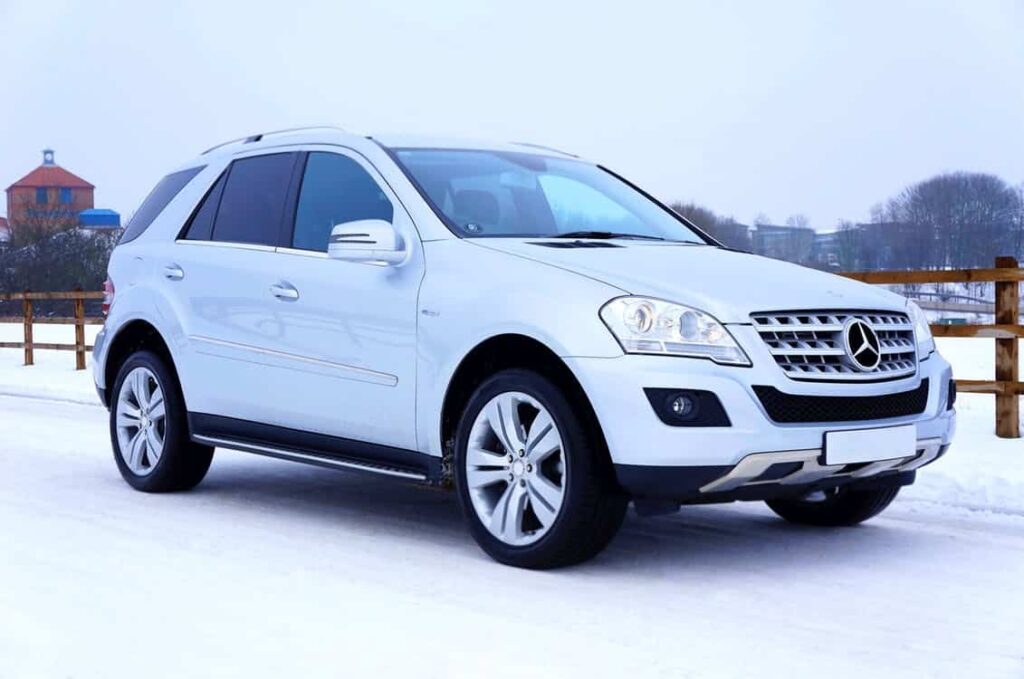19 March 2018 Concept Car
Our society is obsessed with physical appearance. We’re constantly trying to look our best, get our bodies in shape, buy fancy clothes and keep our fitness up. So why should things be any different on the car market? Finding the right car body style for you may seem like a trivial affair. And yet, not only is it one of the most important decisions when purchasing a new vehicle. It is also exceedingly difficult.
One reason for this dilemma is that car body styles have diversified a lot. If you’d asked your daughter or son to draw the image of a car until a few years ago, they would most likely have come up with a saloon (also called a ‘sedan’ in US English). Today, they may just as well draw you a hatchback, SUV, coupe, estate – or another of the countless frame styles available on the market.
So even if you know pretty much exactly what you’re looking for, things can quickly get complicated.
The buying behaviour of UK customers proves how important a car’s body style really is. Here, too, the saloon and even its popular cousin, the hatchback, have been overtaken by a new generation of vehicles. Interestingly, this development has taken place on both sides of the Atlantic, thereby denoting a global shift in demands and needs when it comes to cars.
Thanks to a breathtaking growth spurt, both in Europe and the USA, SUVs, Crossovers and Mini-Vans have become today’s most popular car body style. In 2015, for example, this category grew by almost a quarter, taking up 22% of the entire European car market. 3.2 Million of these so-called ‘soft off-roaders’ were sold that year, a number that even otherwise pretty sober UK car publication driving.co.uk called ‘staggering’.
Already a year earlier, SUVs and crossovers were firmly in the driving position in the States, where they reached a market share of almost 40%. Times certainly are a-changing.
So why all of these shifts? Why does the car body style even matter this much? The answer is not that hard if you think about it. The car body style ultimately decides about what you can do with your car. It enables and limits your options and may therefore be the most significant factor in terms of utility.
The surge of multipurpose vehicles can easily be explained in terms of this utility. For quite some time, there has been a rise in the number of young families with children all across Europe, with family values becoming increasingly vital. Many of the former darlings of the car industry – city cars, sports vehicles, even the saloon and estate – no longer meet these needs. They are either too small or too expensive, they’re not economical enough or do not offer enough interior space.
Crossovers, SUVs and Mini-Vans suddenly seem ideal: Cars that are fun, spacious, flexible, rugged and reasonably economical – what more could you ask for? And so it can hardly come as a surprise, that they have overtaken former family choices such as the estate, which does offer a few of these benefits, however without the added possibility of removing chairs or seating up to eight passengers, for example, and without the raised seating position that turns driving an SUV into an experience.
So what should be your main considerations when deciding which car body style is right for you? The most important aspects are certainly:
Depending on your personal needs and preferences, different points will be more or less important to you, leading to different choices. Now we’ve mapped out what to look for, let’s begin with an overview of the most important car body styles currently available.

We’ll start our journey with the smallest and most affordable category. City cars are an excellent choice if you merely intend to drive within the city limits and make a few short trips each week. Although they will seat up to four persons, the limited passenger- and boot-space mean that longer trips will quickly become uncomfortable.
The design of city cars has greatly improved over the past years. Manufacturers have expanded the cabin size to the extremes of what is physically possible. They have also pushed the wheels to the very edges of the chassis to open up more space on the inside. Finally, they have improved fuel efficiency, making city cars one of the most economical car body styles.
City cars are also easy to manoeuvre and park, as carwow.co.uk are correct in pointing out. Despite their limitations, therefore, city cars can be a great choice for small families.
Super Minis are the missing link between a small city car and a more sizable family vehicle. They offer considerably more space while at the same time still offering the same benefits of a city car. This makes them the ideal entry level models if you have a family but need to watch your wallet.
The saloon is defined by its three-part architecture with a separate engine-, passenger- and luggage-compartment. It used to be the standard car body style for private, non-utilitarian cars. Today, however, it has been eclipsed by hatchbacks and SUVs. The main reasons for the waning popularity of the saloon is its limited boot space
Saloons are still the car of choice for most executive models, however, and this points towards some of their undeniable benefits. For one, their appearance is more commanding and prestigious than that of most other body styles. By separating the baggage department from the passenger section, they feel very stately on the inside, offering more leg room than most other cars. Also, the four door design of the saloon theoretically means that both front- and rear-seat-passengers can access the cabin equally well.
Australian publication Carsguide recently praised the saloon/sedan for its many overlooked advantages, writing:
“If you’re interested in economy and performance, sedans make some pretty compelling arguments, and there’s also the distinct advantage of the safety and security of having a proper, lockable boot. The biggest argument of all, though, would be safety. As much as SUVs and crossovers are catching up, sedans – as well as their coupé and wagon stablemates – set the bar for stability and safety. The relatively low ride height keeps the weight closer to the ground and this low centre of gravity means that cornering, swerving and changing direction don’t upset a sedan’s balance as badly as they do an SUV.”
The saloon may be struggling, but it is by no means past its prime. One sign that saloons are still extremely desirable is the advent of the 21st century coupe: A new type of car body style that uses the elegant coupe design and layers it over a sedan frame. These cars will have the typical rounded roof of a coupe and its emphasis on front seat passengers, but also feature four doors and a reasonable trunk. It can, with some justification, be argued that these are really more sporty saloons rather than more practical coupes.
Estate models are typically built on Saloon designs, although they may sometimes be just a little longer. The main difference between an estate and a saloon is the trunk space. With a saloon, the rear window is placed at the end of the passenger cabin, With an estate, it is placed at the end of the luggage department and the roof is extended to the end of the vehicle. This frees up a lot of additional transportation space, typically doubling boot volume.
Estates were, for a long time, the ideal family car. They combined the safety and convenience of saloons – thanks to their unequalled leg space and excellent driving characteristics – with the functional benefits of a VAN. Although they weren’t ideal for inner city drives, they were sill acceptable, and no other car body style could rival them for longer trips. They even made for excellent business cars, thanks to their majestic appearance.
This image has come under a lot of questioning more recently, Compared to hatchbacks, estates are far less easy to manoeuvre and more expensive. Compared to SUVs and crossovers, they are less fun and compared to Mini-VANs, they offer less flexibility and space for passengers. Although it still has many benefits, the estate may be on its way down.
In stark contrast to estates, hatchbacks have remained popular with the buying public until the present day. Take a look at any sales statistics for the UK and you will find hatchback versions taking up the first spots in almost every single top 10.
Hatchbacks are defined by the fact that their rear window and the trunk door open as one unit. In practise, this means that the rear window slopes a little slower than with a saloon, thereby creating additional head space in the luggage department.
It is easy to see why this makes hatchbacks such a great proposition:
In many respects, hatchbacks offer the best of all worlds. They may not be perfect in any single department, but they do pretty well in all of them. Especially in the demanding and quickly changing environment we live in, that makes them an excellent and, most of all, safe option.
According to website thoughtco, the hatchback is, very simply, “arguably the most sensible passenger car yet devised”.

As we pointed out in the intro to this article, crossovers and SUVs are the new kings of the road. Some have argued that this is because of “a higher seating position, higher ground clearance, softer ride, more interior space, optional four-wheel or all-wheel drive, and towing capacity.”
We’d agree and would like to add that these car body styles have eclipsed most of the more traditional models for a simple reason: They are focusing on the requirements of parents and children. Which means offering maximum flexibility, while at the same time cutting out any superfluous machismo. Although they look cool and remarkably elegant, most cars in this category are foremost practical and offer great value for money.
A Mini-Van or also sometimes called MPV, adds even more space to the equation, which can come in handy if you have twins, like to drive to remote spaces on your vacation or if you simply enjoy that luxurious feeling of being able to cross your legs without smudging your seat neighbour’s pant legs. According to thoughtco:
“It’s been said the minivan is the station wagon for today’s families; at least large ones. A minivan can transport up to eight passengers in three-row seating and still leave room for cargo. Rear seats that fold flat into the floor create an immense amount of room. Parents like the walk-through space between the front seats. Kids like the way video screens provide on-the-go entertainment. Minivans drive more like a car than an SUV does, and the only people who refuse to be seen in one are image-conscious young men.”
Now you know all about the advantages and disadvantages of these different body styles, it’s time to see them in action. We have fantastic examples from all car body styles at great prices. Check out our current offers right here on our website or visit our Manchester showroom to see them in person.
We’re already looking forward to your visit!
19 March 2018 Concept Car